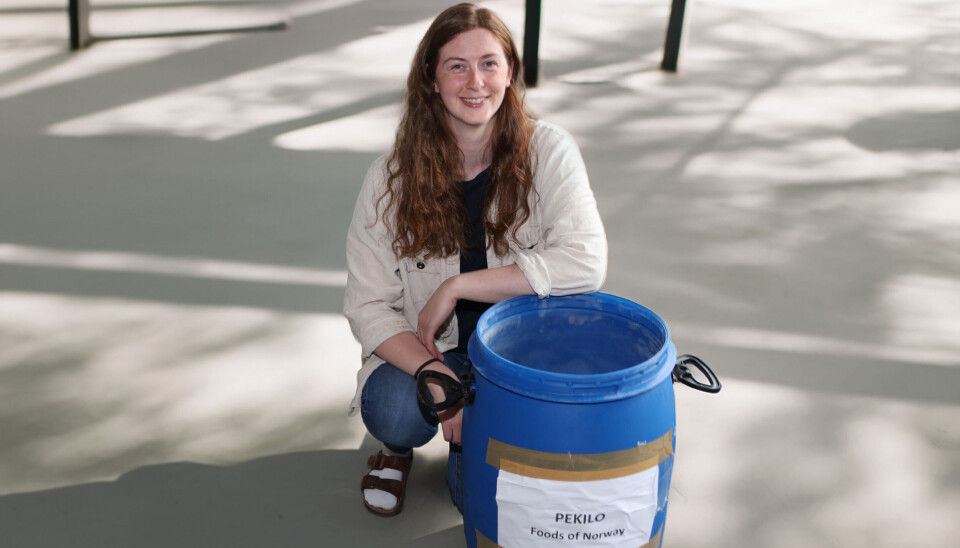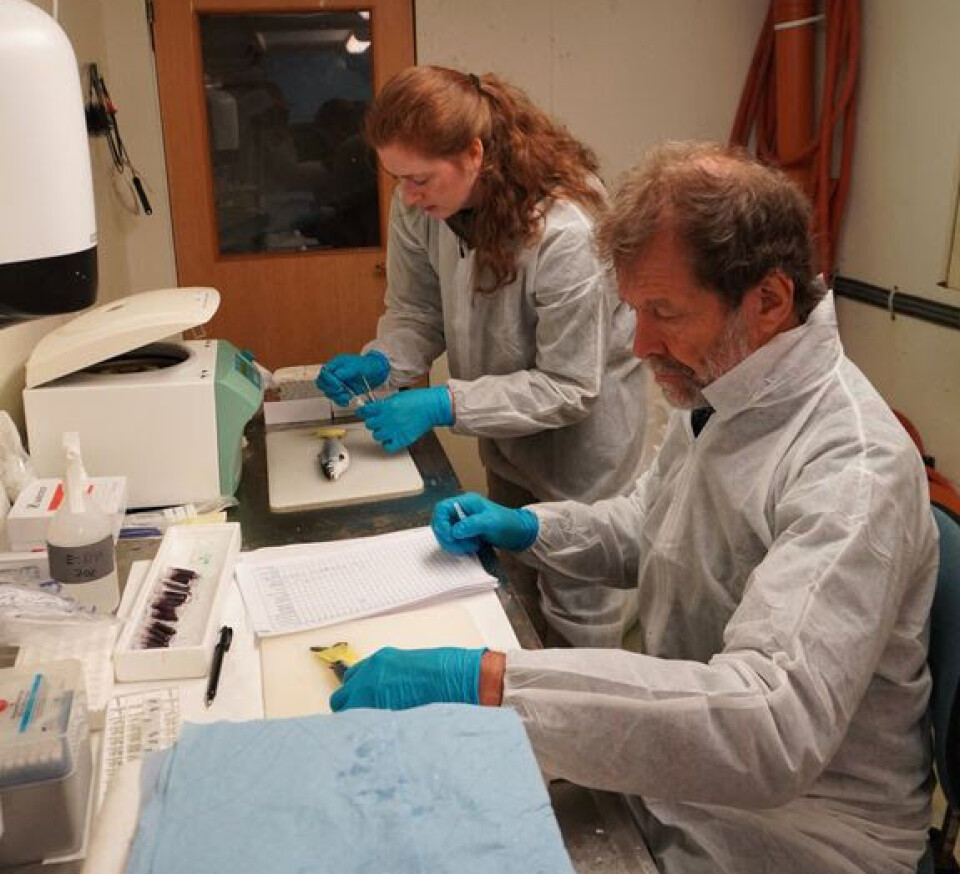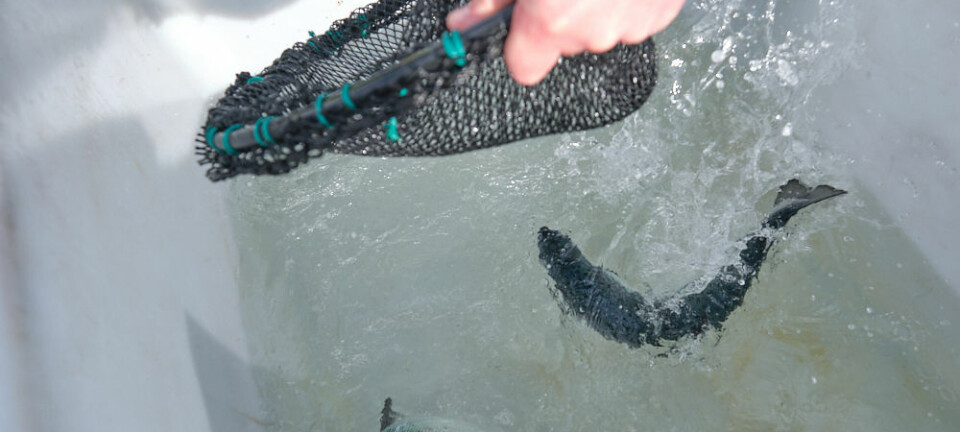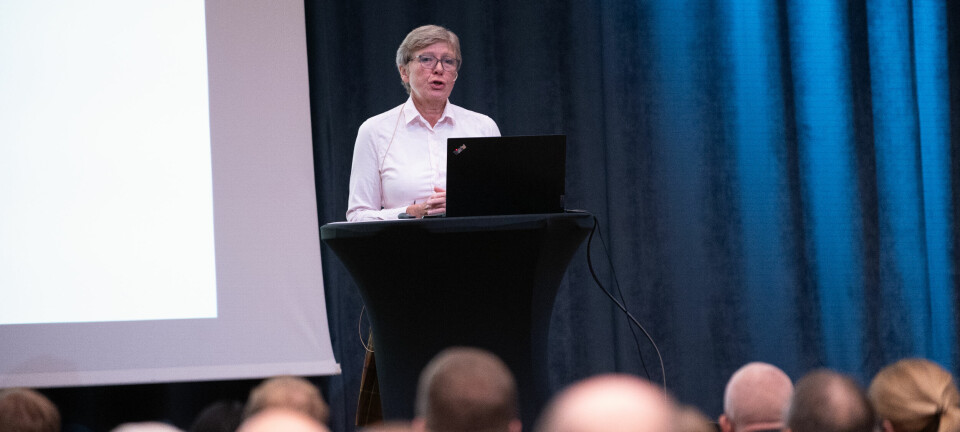
Can a fungus solve the problem of winter sores?
New experiments at the Norwegian University of Life Sciences will show whether the feed protein pekilo can increase fish's resistance.
Winter sores are a well-known problem in salmon farming, caused by the bacterium Moritella viscosa. There is a vaccine, but it is not perfect. Therefore, research fellow Marte Røsvik at the Norwegian University of Life Sciences (NMBU) tested whether fish that receive the functional ingredient pekilo in their feed during the spawning period are better equipped to resist infection.
Previous research at Foods of Norway, a centre for research-driven innovation at NMBU, has shown that pekilo is a raw material that salmon like, that provides good growth, in addition to having immunostimulating and health-promoting properties. It is a filamentous fungus grown on forest raw materials, meaning that it can recycle side streams from forestry into high-quality proteins.
“Pekilo has a protein content of 65-70%, with an amino acid profile that suits the salmon’s needs well,” said Røsvik.

Røsvik’s doctoral project is part of the ForestFeed research project, where researchers have looked at the effect of various feed ingredients on salmon health and robustness for several years.
Experiment design
The infection experiment took place at both the Centre for Fish Experiments at NMBU's campus at Ås, south of Oslo, and at the seawater facilities at NIVA at Solbergstrand, not far from Drøbak. For the experiment, five types of feed were made with different mixtures of pekilo and microalgae oil (of the type Schizochytrium sp.).
“Some feeds contain only pekilo, some only microalgae oil, and some have a combination. And then we have a control group without [either of those] components,” said Røsvik.
First, the fish were held in tanks at the Centre for Fish Experiments, where Røsvik and her research colleague Sergio Rocha fed the salmon with the different types of feed for four weeks.
“We weighed the fish and measured growth and health status, and ran light control to simulate smoltification,” said Røsvik.
Exposed to bacteria
After smoltification, the fish were transferred to the seawater facilities at NIVA at Solbergstrand, where they had a week of acclimatisation in tanks with seawater and a transition to regular feed. They were then exposed to the bacteria that causes winter sores.
“Professor Henning Sørum at NMBU Veterinary School produced the infectious agent for us, and came with us to NIVA to carry out the exposure. We added 2.5 litres of infectious liquid with the bacteria to each tank, and stopped the water flow so that the fish remained in the infectious bath for a while,” said Røsvik.
Then the daily monitoring of the fish began.
“We looked for symptoms such as wounds, strange swimming patterns, or the fish behaving abnormally. When we discovered something, we took the fish out, euthanised it and collected tissue samples,” said Røsvik.
Samples were taken from wounds, as well as from spleen and kidneys, which are tissues of great importance for the fish’s immune response. At the end of the experiment, all the fish were euthanised, and samples were taken from a selection of healthy fish without wounds.

Promising trends
“The hope is that fish that have been given pekilo in their feed will prove to be more robust. We have seen some promising trends, but we will have to conduct many analyses of the experimental material before we can draw conclusions. There is a lot of work left to do,” said Røsvik.
The results from the experiment will be analysed during the autumn, and Røsvik’s goal is to publish a scientific article on the results as part of her doctoral degree.
The researcher has also planned another experiment.
“After the summer holidays, we will start a new small-scale experiment in the sea, with cages where we test pekilo under more natural conditions, to see how it performs when the fish are exposed to real environmental challenges such as delousing or disease,” said Røsvik. This is taking place at the experimental station, LetSea, in collaboration with feed producer BioMar.
Great interest from industry
Foods of Norway, of which the ForestFeed project is a part, has been working for over nine years to develop new and sustainable feed sources for Norwegian aquaculture. And both the health and sustainability aspects of the research have received great attention, both nationally and internationally.
“Pekilo has been one of several key parts of the research in Foods of Norway, and appears to have great potential as a protein source with good health effects. In addition, pekilo has a low climate footprint since it is produced from forest raw materials. This makes it sustainable, both in production and in use,” said Professor Margareth Øverland, head of Foods of Norway.
The farmers want sustainable feed that provides robust fish. An investment in scaling up the production of pekilo will probably prove to be part of the solution for the salmon feed of the future, predicts Øverland.






































































